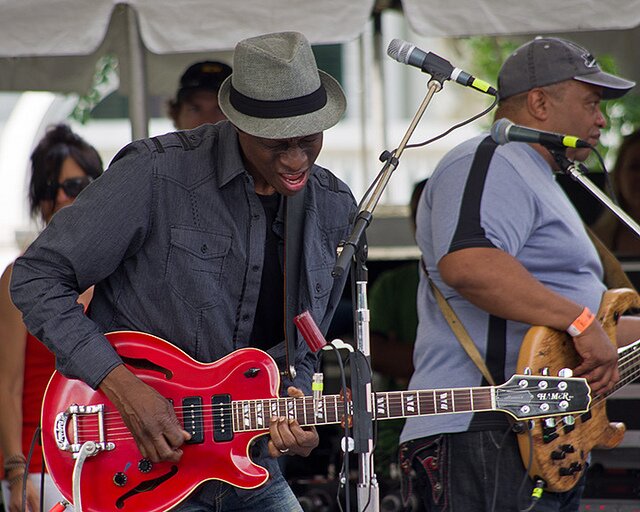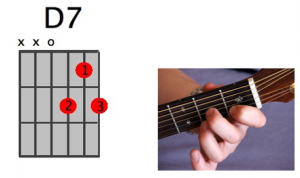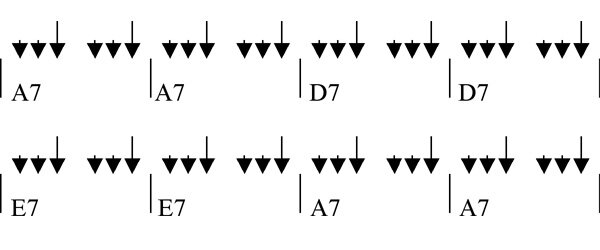
As we learnt in the lesson before, the blues scale has just one extra note turning it from a pentatonic minor scale into a blues scale. Just as the scale changes, the chords that suit them best also have one extra note, this time from a major chord.
These chords are known as dominant seven chords and appear on a chord chard as a capital letter followed by the number 7 e.g A7. Below is a diagram showing you which notes from the major scale are included in a dominant seventh chord:

Later in the lesson we take a look at a standard blues progression called the ‘12 bar blues’. The three dominant seventh chords that we will use are A7, D7 and E7. Take a look at the diagrams and photos and get used to the chords before you attempt the progression:
A Dominant 7:

D Dominant 7:

E Dominant 7:

Now lets put these chords into action with the 12 bar blues. To start with follow the rhythm set out below in order to keep things simple, but once you have mastered this feel free to come up with a cool bluesy rhythm of your own!

Listen to the backing track and try and get your rhythm sounding as close to it as possible. Keep the 1st, 2nd, 5th and 6th strums of each bar nice and short just covering the lower strings. Have a listen to the track to see how this sounds.
Once you have had a good crack at the chord sequence, its time to bring in the blues scale and have your first go at improvisation. Improvisation is when you make up a solo or a melody on the spot using notes from a certain scale. Try not to just play the scale up and down, see if you can be creative and come up with some small little phrases. Keep it nice and simple, often two or three notes at once are enough. Don’t be afraid to leave gaps, often breaks in improvisation can add a real quality to what you are playing.
RELATED How to Find, Transpose and Construct Power Chords
For now we’re not going to look into improvisation in too much detail. Just try and chop the scales up into little patterns and see how they fit over the chords. Use any notes in any order, at this stage there are no rules….just follow your ears. Have a listen to the example if you’re confused as to what do.